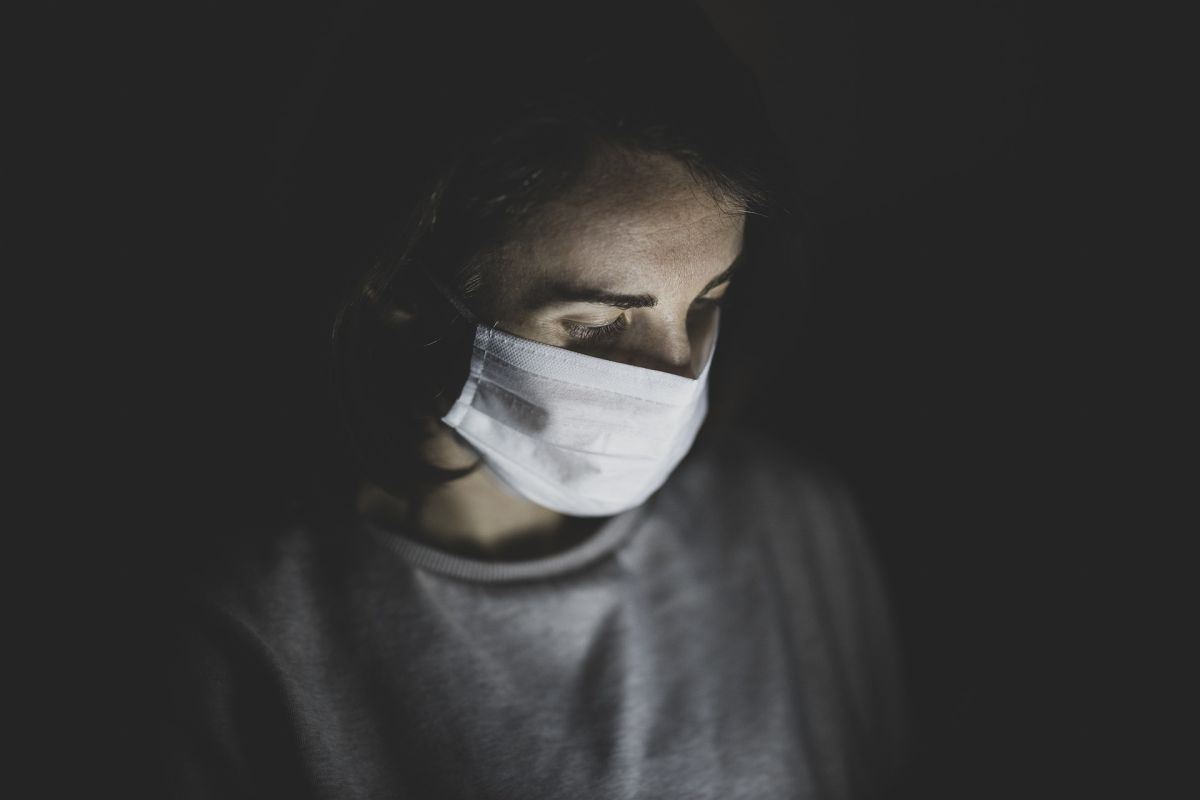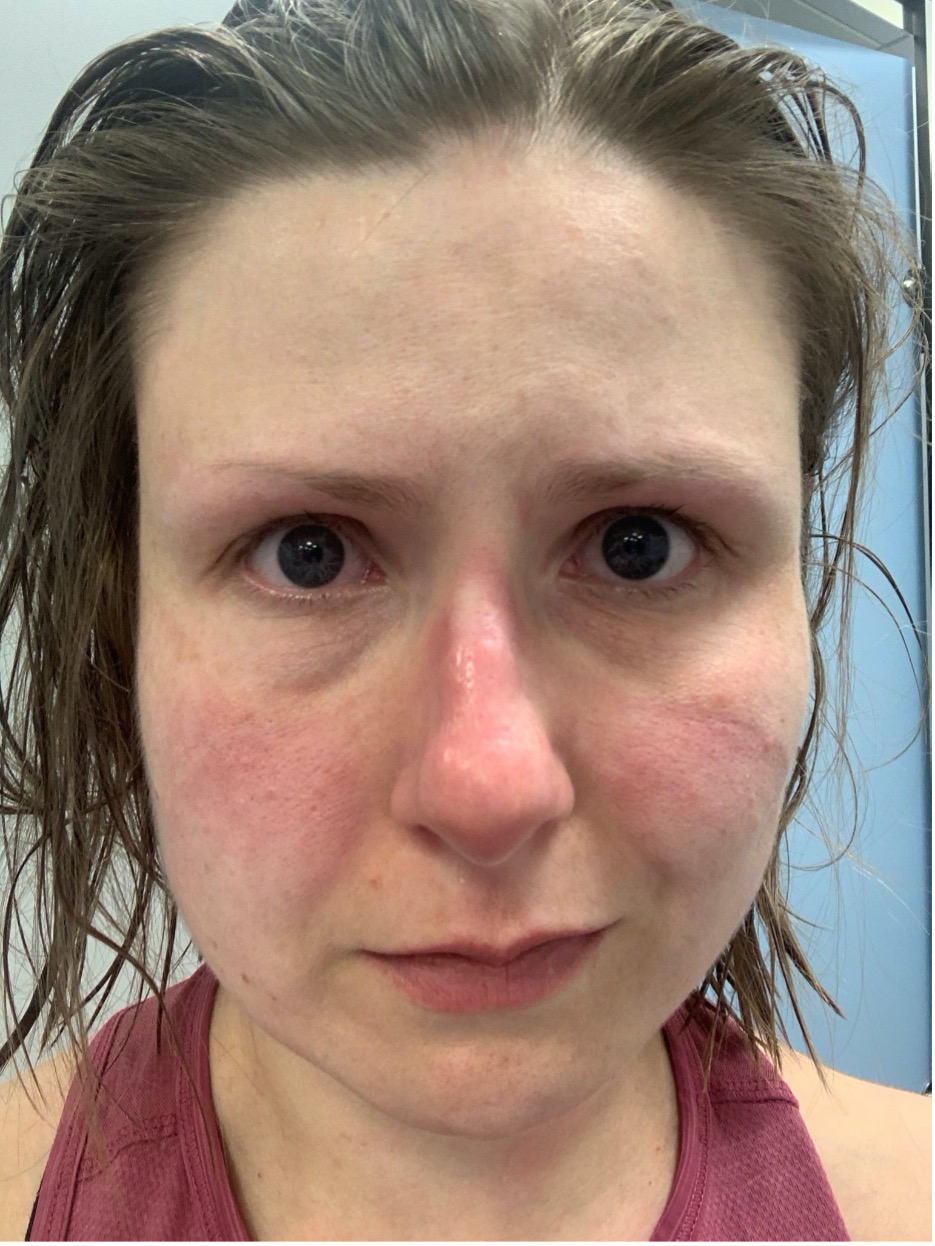The PPE gap: another risk for women in healthcare

If you’ve been physically present on Earth for the past year, you’re probably aware of the coronavirus pandemic. The news has been completely saturated with stories about the NHS, its staff, and the struggles they have gone through as they attempt to keep pace with the spread of COVID-19 throughout the UK.
At this point, images like the one below will be unsurprising to many. These striking photos have been posted by NHS staff like Natalie. They all experience first-hand the strain that wearing high intensity personal protective equipment (PPE) for long, busy shifts can have on the body.

But in addition to the expected challenges of working during a crisis such as this, women also face an additional struggle. Ill-fitting PPE.
The issues of PPE
For every face mask, plastic gown, and glove used in a healthcare scenario, there is a copious design process. The problem is, when adopting a ‘one-size-fits-all’ mindset around your product, there is an inevitable inequity in how well it will perform across the board. Particularly when the standard size is based off of male proportions.
Dr Helen Fidler writes in RNCI that filtering facepiece (FFP) masks are an area of particular concern during the COVID pandemic. They provide the baseline of protection to avoid contracting the disease through particles in the air. The fit test is a safety protocol for making sure the mask fits and functions correctly. The test is often failed by female colleagues who then have no choice but to continue working with dysfunctional PPE. These masks are designed to be unisex. However, because they are modelled to fit an ‘average’ male face, they become frequently unsuitable for women.
“PPE is designed for a 6 foot 3 inch bloke built like a rugby player” – Frontline NHS worker via The Guardian
According to the BMJ, other issues with PPE include goggles slipping down the face, gowns that are too long, face shields that push against the breasts, and ill-fitting respirators. There is clear anecdotal evidence that supports the assertion that a more tailored approach to fitting is needed. This is to ensure the safety of and best working conditions for staff.
The Guardian reported in 2020 that a critical care nurse has to be moved to another unit because “her head was too small for the mask to create the right seal around her mouth”. Others are using micropore tape in a DIY attempt to plug the gaps around their ill-fitting masks. This issue is forcing female healthcare workers to choose between adequate protection for themselves and caring for their patients. This exacerbated already-present issues surrounding the lack of PPE in general at the beginning of the crisis.
Who is PPE designed for?
This problem is not constrained just to the healthcare sector. The inability of companies to include models other than the ‘average’ man when testing their products has come under increasing scrutiny in recent years. This man is usually 25-30 years old, 70kg, 170cm tall and has Caucasian features. Obviously, this is not the ‘average’ build or frame for the majority of the population. Thus, it results in large safety and efficacy gaps of common products.
As well as women, this is also a huge problem for some men (especially those with small faces or facial hair) and BAME individuals. ‘Average’ Caucasian facial features are what the equipment design is based on. Again, this disparity just adds to already-present issues and inequalities in the industry. Namely, BAME staff being more likely to experiences shortage of PPE in the first place.
A widespread issue
Despite being thrust into the spotlight by the pandemic, this is not a new issue by any means. A widely cited 2017 report by the Trades Union Congress (TUC) found that 57% of the women surveyed by the organisation said that their PPE sometimes hampered or significantly hampered their work. This was particularly striking in the emergency services sector. Only 5% of women said their PPE never interfered with their ability to do their job.
Despite these stories, we live in a world where the needs of many are sacrificed for corporate and industrial complacency and profit. As the general secretary of the TUC, Frances O’Grady, said to The Guardian “With women making up nearly eight in 10 of the NHS workforce, it’s a disgrace that we don’t have protective uniforms in women’s sizes. Our workers deserve better”.







